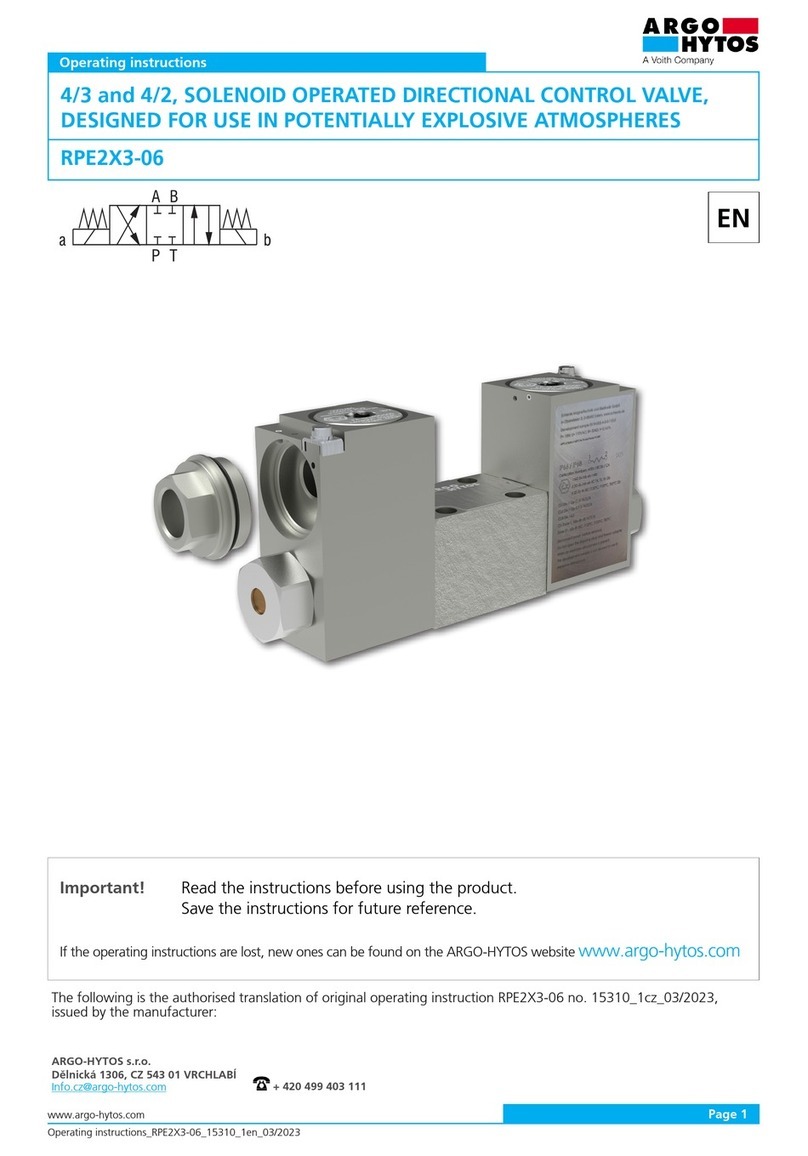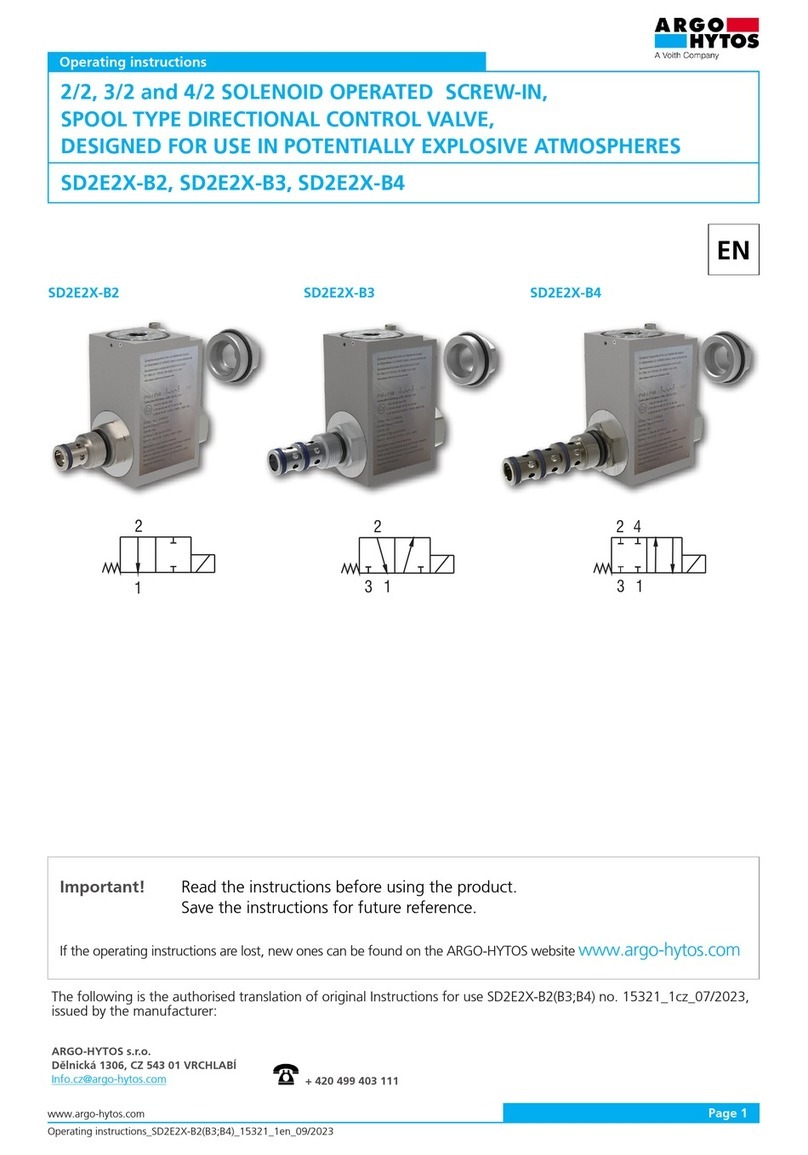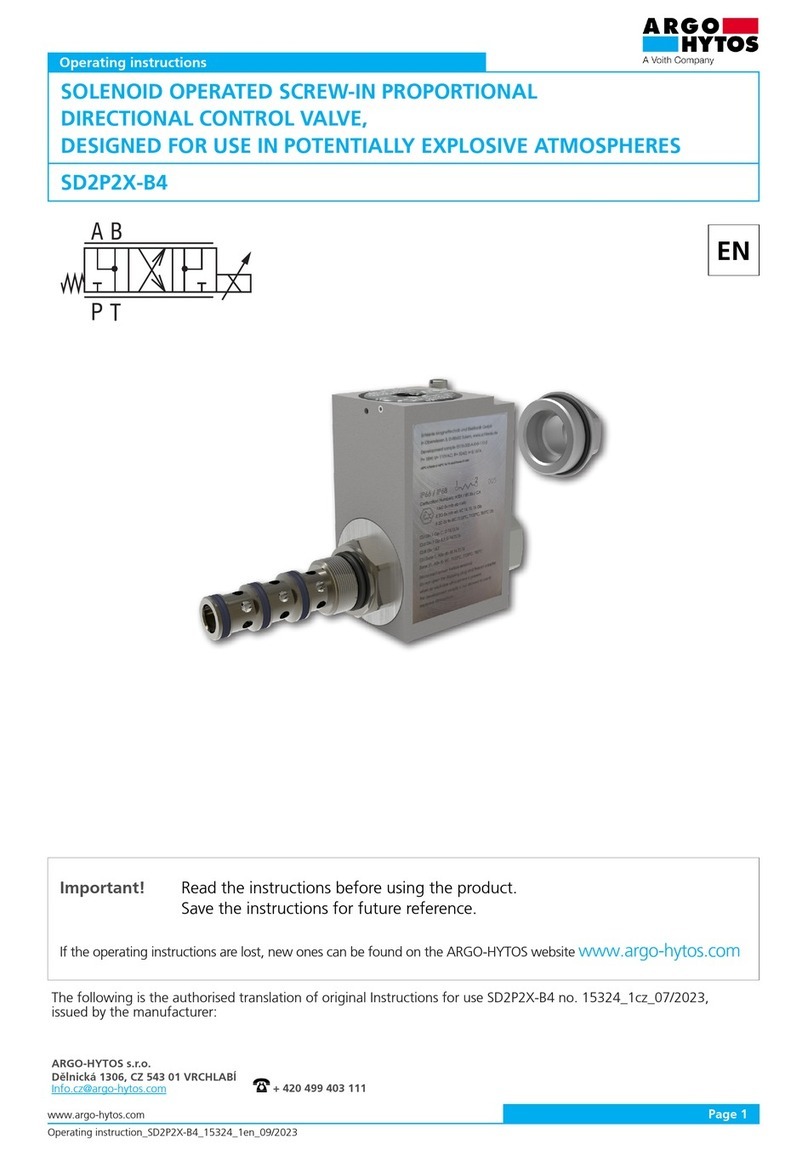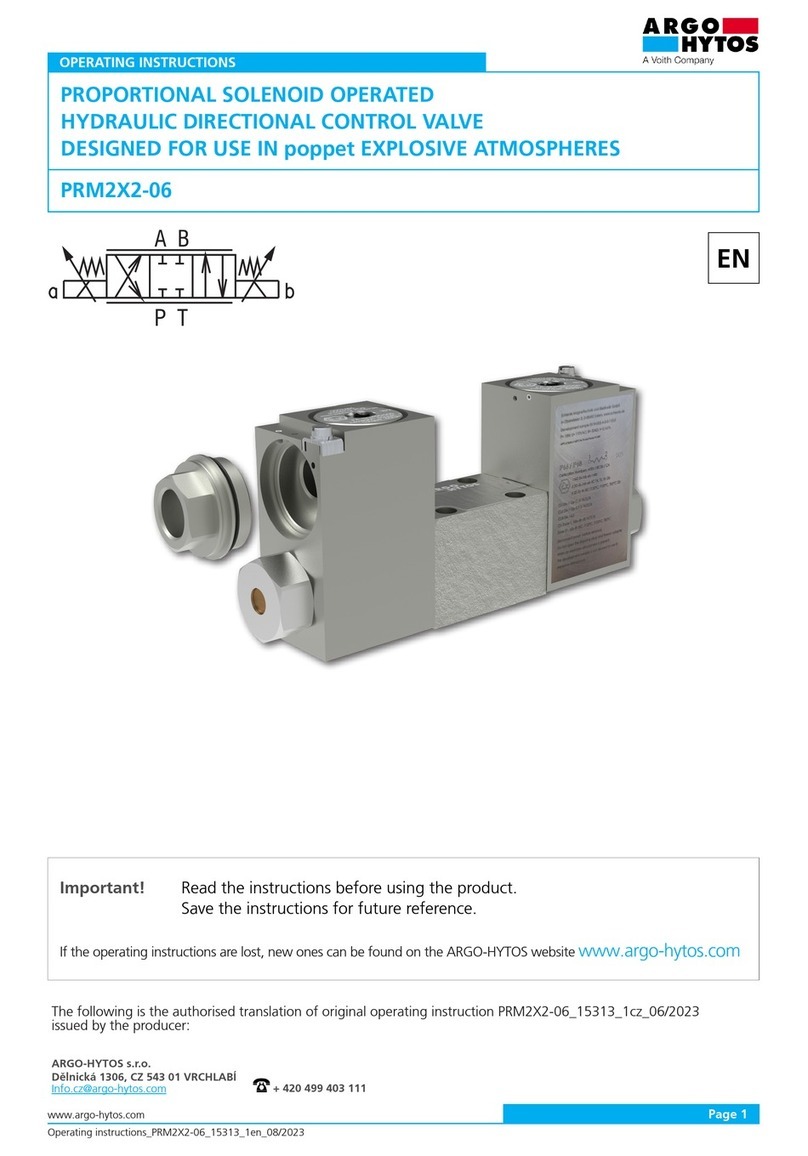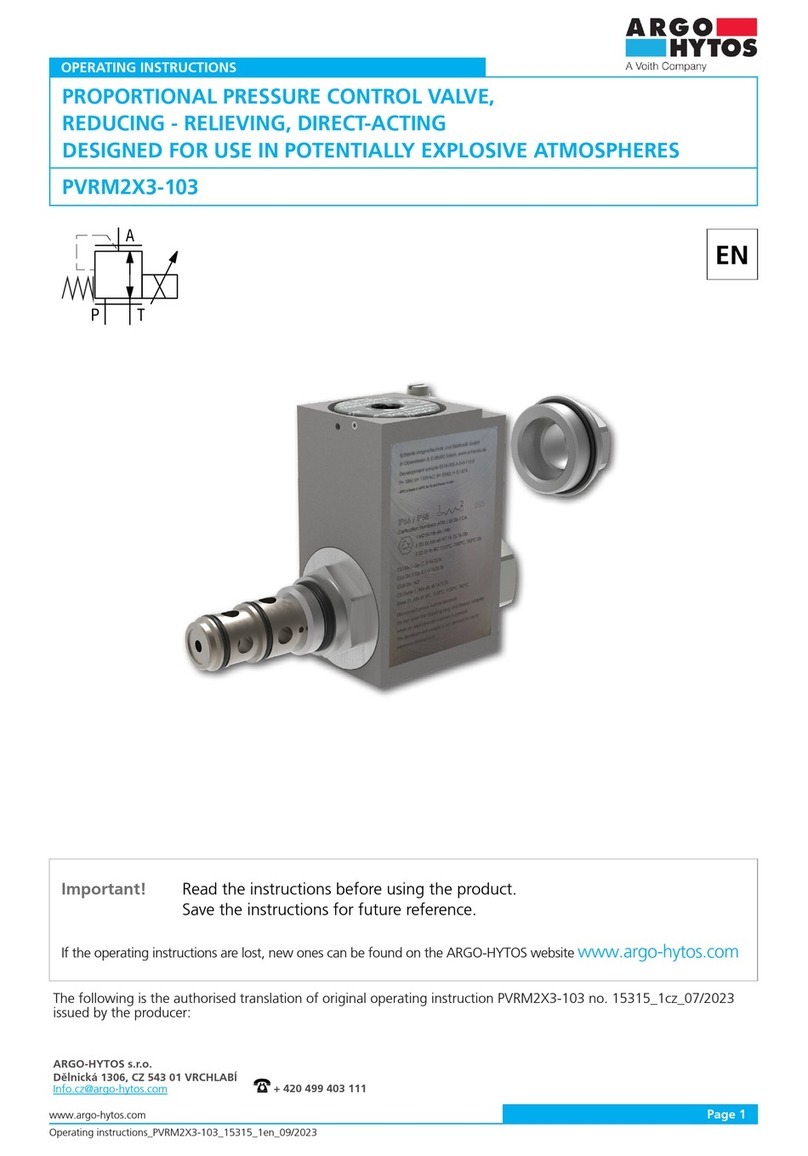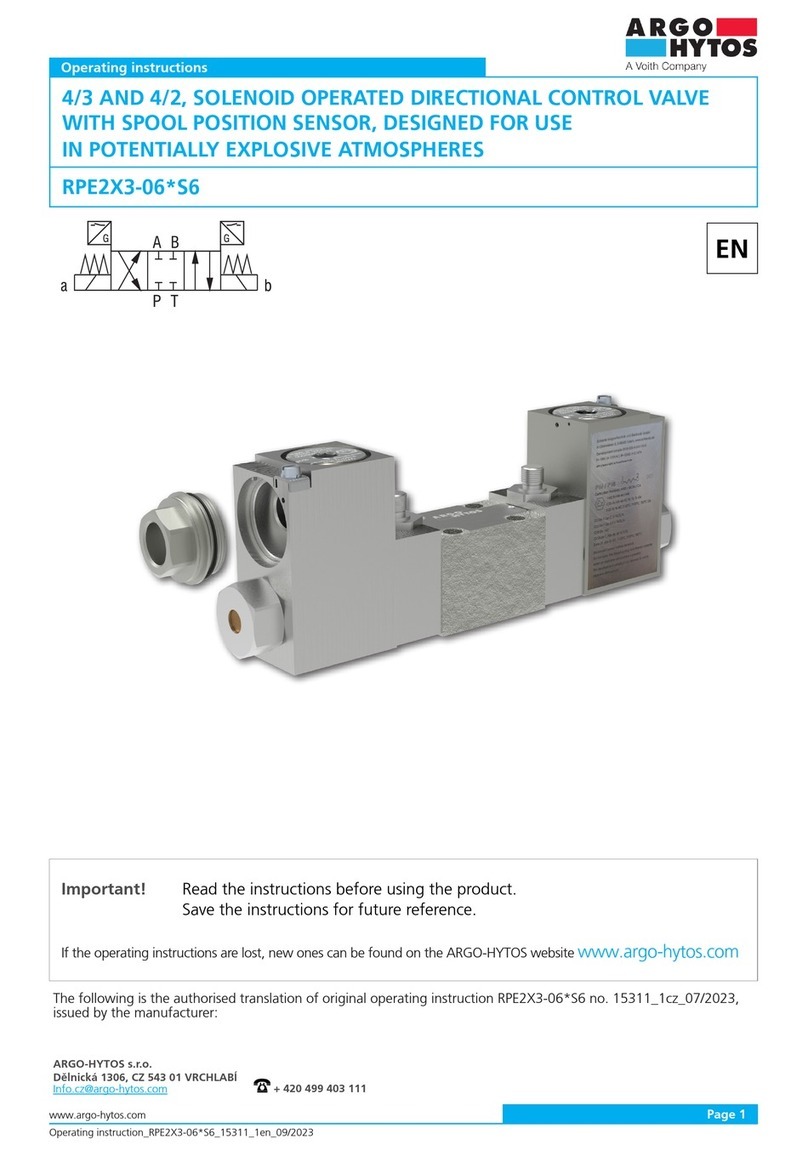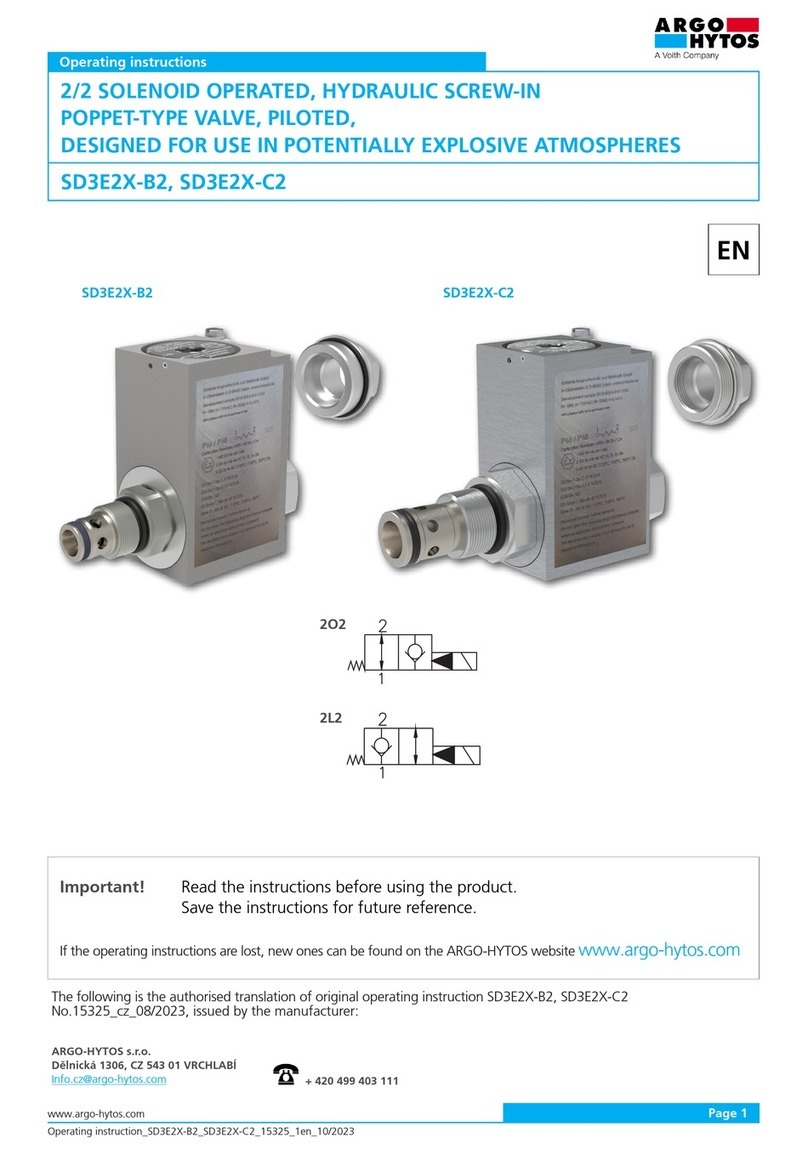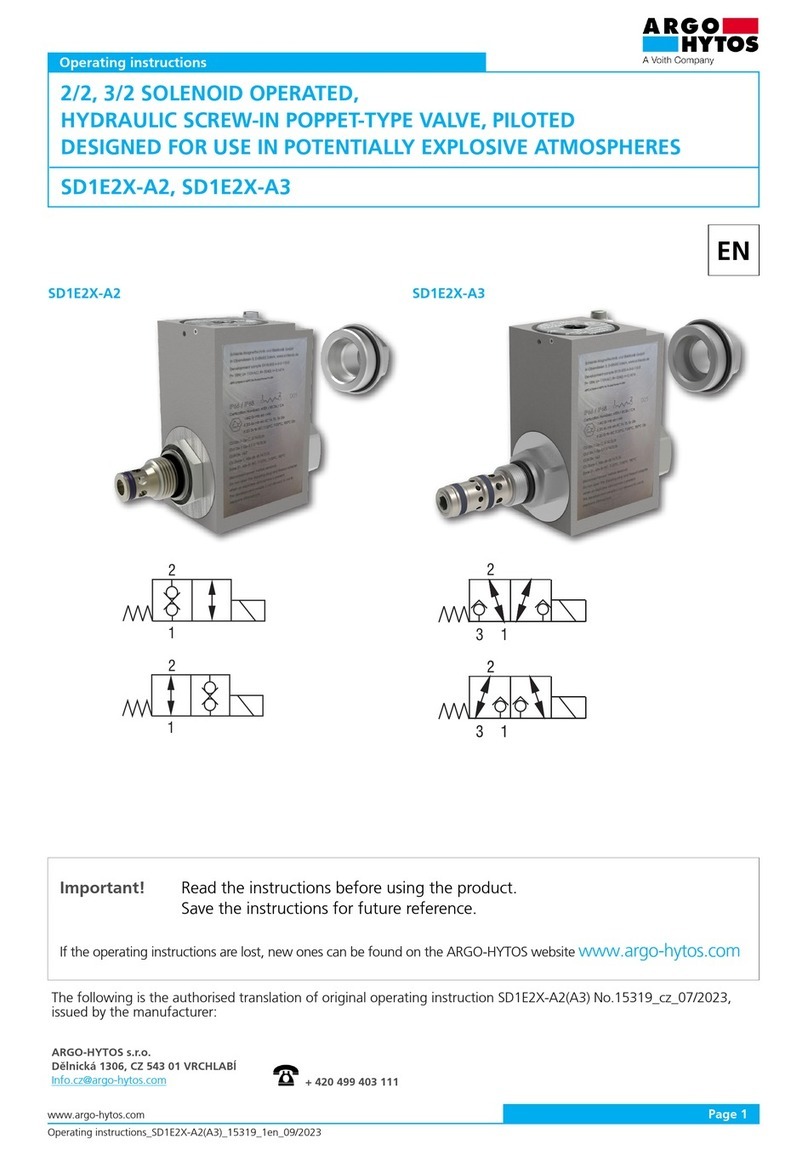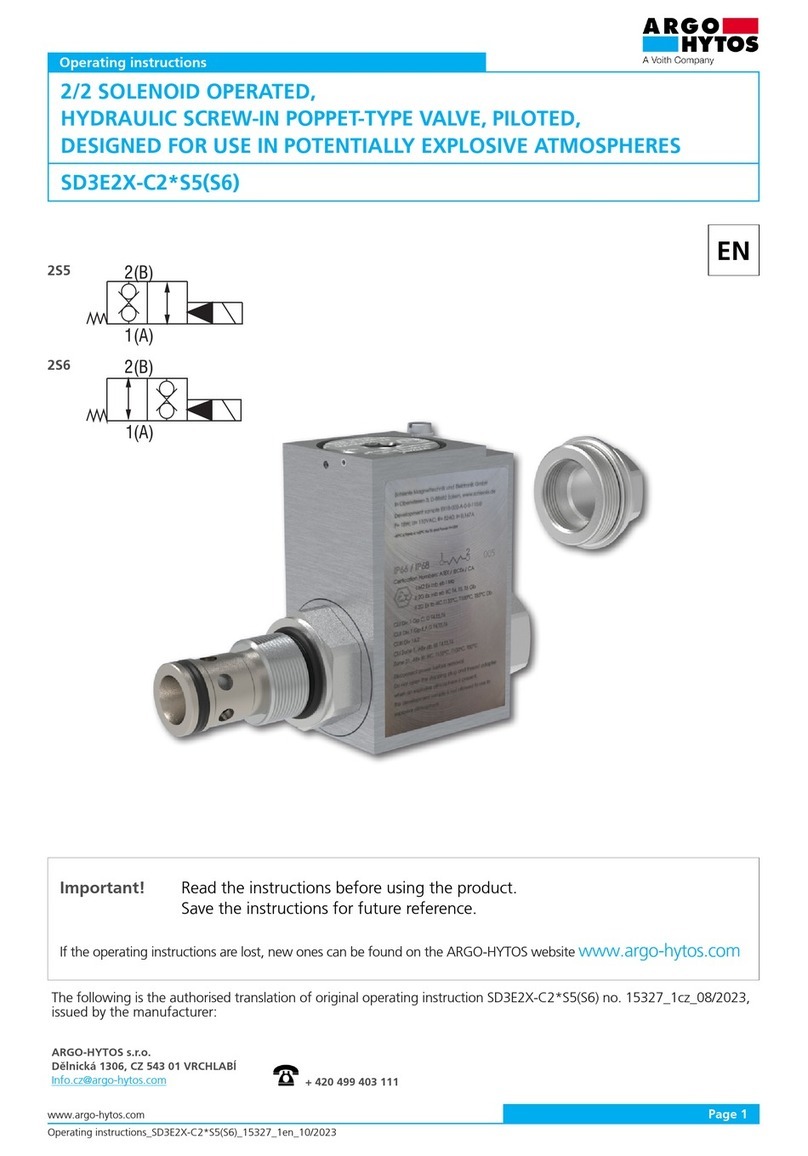
Operating instructions_PRM2X8-06_15314_1en_08/2023
Page 8 www.argo-hytos.com
An overview of signal words and warning signs used in the text
Glossary of technical terms used
›A hydraulic mechanism is one in which energy is transmitted via the pressure energy of the working fluid.
›A hydraulic directional control valve is a valve designed to control the direction of movement or stop the output component of an appliance.
›The pilot operated valve consists of two basic parts. The control stage is operated directly, e.g. by a solenoid. The main stage is hydraulically
controlled depending on the position of the control stage.
›The volumetric flow rate Q is the amount of liquid in volume units that flows through a given flow cross-section per time unit (SI unit is m3s-1,
in practice the unit l/min is used)
›The control solenoid is designed to reposition the valve spool that interconnects or closes the channels in the body. The solenoid consists of
an excitation coil which, by passing an electric current through the winding, generates a magnetic field which exerts a force on the armature of
the mechanical actuating system.
›The proportional hydraulic valve regulates the hydraulic parameter in the circuit continuously within a given range depending on the
magnitude of he input control electrical signal.
›Pressure is the force acting per area unit (SI unit Pascal (1 Pa = Nm-2), in practice the unit used is bar (1bar = 0,1MPa)
1. Use of product
The PRM2X8-06 hydraulic valve is an proportional directional control valve, pilot operated. The control spool, moving inside the main spool is
controlled directly by electromagnets. The main spool is hydraulically controlled depending on the position of the control spool. The advantage of the
two-stage valve design is the high hydraulic power transmitted (product of pressure and volume flow). The valve body has a connection pattern at
the base with a nominal size of DN 06 according to ISO 4401. The product is designed for continuous (proportional) flow volume control, the valve
with two solenoids is also for controlling the flow direction of the working fluid. In practice, the valve is used to continuously control the speed and
movement direction of the hydraulic cylinder piston rod or the speed and direction of rotation of the hydraulic motor output shaft, depending on the
magnitude and polarity of the electrical input control signal. For better control function of the valve, a suitable electronic control unit (not included)
should be used to control the valve. However, it must meet the necessary degree of protection or be located outside potentially explosive atmospheres.
Valves with ATEX certification according to Directive 2014/34/EU and IECEx certification according to IECEx OD 009 and related harmonized
standards may be used in explosive atmospheres consisting of mine gas, gas or dust. The valves are marked with the CE Ex mark of conformity and
are accompanied by a Declaration of Conformity.
Use in explosive atmospheres:
Equipment - group I, mines, where the explosive atmosphere of firedamp consists predominantly methane.
The valve has a high level of safety (EPL = Mb), which makes initiation unlikely during the interval between gas discharge and valve shutdown.
It is designed for category M2 devices that remain off after gas discharge.
Equipment - group II, where the explosive atmosphere consists of gasses other than mines gas.
The valve has a high level of safety (EPL = Gb) which allows the valve to be used in zones 1 and 2. The valve must not be used in zone 0.
There is a risk of explosion. The valve is certified for gas groups IIA (typical gas is propane), IIB (typical gas is ethylene) also for hydrogen from group IIC.
The joint dimensions do not meet the requirements for Group IIC acetylene.
Equipment - group III, where the explosive atmosphere consists of dust and flammable flying particles.
The valve has a high level of safety (EPL = Db) which allows the valve to be used in zones 21 and 22. The valve must not be used in zone 20. There is
a risk of explosion. The valve is certified for all dust groups - IIIA (flammable flying particles), IIIB (non-conductive dust) and IIIC (conductive dust).
An overview of other symbols and abbreviations used in the text
Symbol, designation Description of the meaning of the symbol, designation
AC, DC Designation for alternating (AC) and direct (DC) current, voltage
ATEX Explosive Atmospheres
EPL Equipment Protection Level (see EN 60079.0)
IEC International Electrotechnical Commission
NBR Rubber used for the manufacture of seals
PA Polyamide
PE Polyethylene
DANGER Signal word combined with a warning sign used to signify that a dangerous situation which could result in
death or serious injury is imminent.
WARNING Signal word combined with a warning sign used to signify the occurrence of a potentially dangerous situation
that could result in death or serious injury if not avoided.
CAUTION Signal word combined with a warning sign used to signify a potentially hazardous situation which, if not
avoided, may result in minor or moderate injury.
